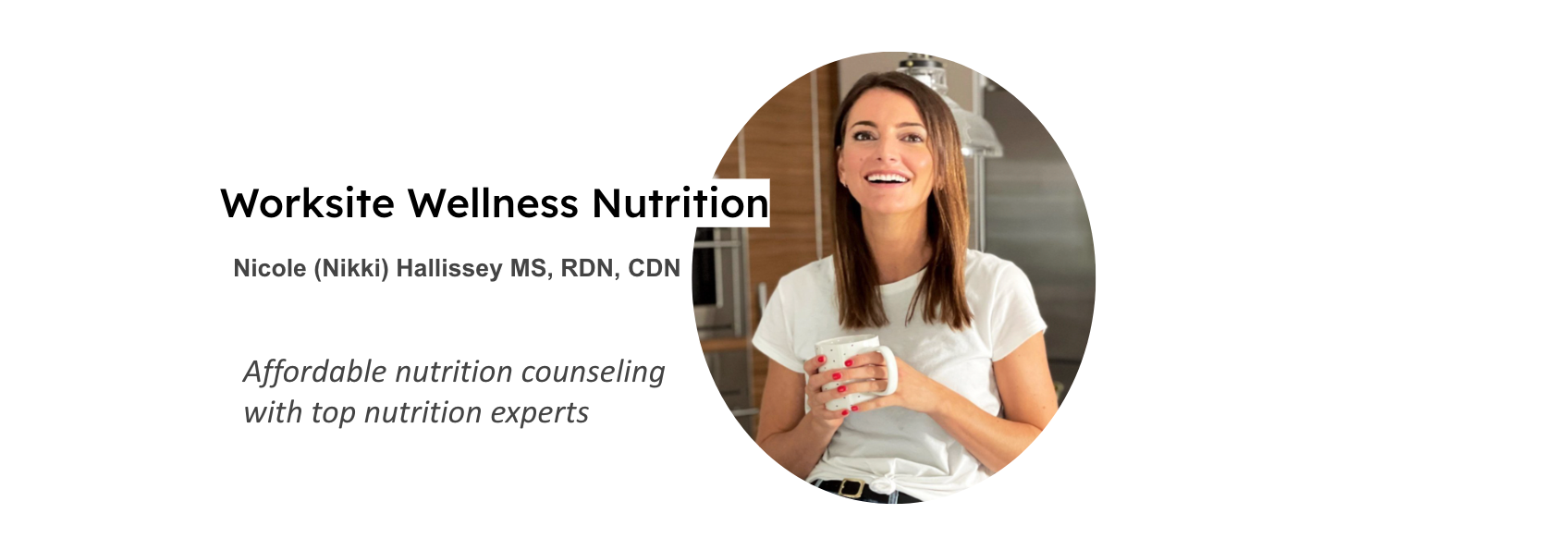
A Mixed Methods UXR Study
User Experience Researcher (UXR) // Worksite Wellness Nutrition // Feb - March 2023
Worksite Wellness Nutrition is a client-based service founded by registered dietician and nutritionist, Nicole Hallissey, to provide one-to-one remote nutritional counseling.
CHALLENGE: Many potentially interested users quit their user journey before scheduling an online appointment for remote nutritional counseling.
SOLUTION: To boost user web engagement and increase potential enrollment.
METHODOLOGY
My team and I used a mixed methodological approach to gain timely feedback about the usability of the website; and, to capture the reality of users’ experiences as they learned about the services offered. We conducted a competitive audit, analyzed interactive heat maps, and engaged users in usability testing and survey research.
COMPETITIVE AUDIT / FINDINGS
My team conducted a competitive analysis to identify current strengths and weaknesses of Worksite Wellness Nutrition’s competitors, understand its position in the marketplace and provide recommendations for improvement.
Competitive Audit Findings
Ineffective call-to-action (CTA) buttons
Service plans lacked pertinent details
Pricing information excluded
Poor information architecture (IA)
Low findability in Google search (SEO)
HOTJAR ANALYSIS
We utilized an online tool called Hot Jar to analyze how Worksite Wellness Nutrition users were responding to the website. This tool allowed us to directly interpret key data points that outlined user interaction and fulfillment with the website:
Time spent
Average amount of pages visited
Most popular pages viewed
Bounce Rate
Types of Users
Heatmap visual of clickpoints
Hotjar Findings
Homepage: Users click on titles listed in the “Featured in” section, but there are no links. (Avg. Time: 00:03:30)
Services: Most users go to the “about page” from here instead of continuing the user journey. (Avg. Time: 00:02:35)
Contact Us: More users click on the message box field than submit messages, and there is no email address linked with the prompt: “fill out the form or email us for the quickest response.” (Avg. Time: 00:01:23)
About Us: Many users draft messages without sending them, abruptly ending the user journey. (Avg. Time: 00:02:39)
USABILITY STUDY
To evaluate how user-friendly the current Worksite Wellness Nutrition website is, we observed 5 representative participants “think aloud” as they completed core tasks along a typical user journey.
Usability Study Findings
After many iterations, we regrouped the data using key words from the research questions and conducted a thematic analysis to see what patterns emerged. Findings from the user studies are based on the opinions, attitudes and experiences shared by the majority of participants.
5/5 users felt the users could have been better organized. Users want better information architecture; and, for the content (imagery and testimonials) to reflect users with diverse nutritional needs and body types.
4/5 users disliked having to request an appointment or fill out a form to learn about the services provided. Users want detailed information about the services provided before they “request an appointment.”
5/5 users could not find the cost of nutritional counseling sessions on the website. Users want pricing information to be accessible on the website.
4/5 users felt skeptical of giving their credit card information. Users want to know the cost of their first session before scheduling the first appointment.
SURVEY
The recruited 26 participants made up a mixed demographic according to age, sex, income level, race, employment, level of education and insurance. Some participants had previous exposure to remote nutritional counseling while others did not. The survey was created and analyzed in Qualtrics XM.
Survey Findings
Average Net Promoter Score (NPS): - 32.3%
Average Percent Detractors: 49.5%
Average Percent Passives: 33.3%
Average Percent Promoters: 17.2%
OVERARCHING THEMES
Following an analysis of user testing, Hotjar and survey data, the following themes consistently emerged across all research findings as high priority usability issues: navigation, services and pricing. (Supporting data on the right).
INSIGHTS
Current Information architecture (IA) makes navigation confusing. Users expressed that information about the nutritionists, services offered, pricing, and insurance was more difficult to find than expected.
Detailed information about services is missing. Users felt they did not understand what to expect from remote nutritional counseling. Several users suggested a including a model or example of what a session might look like.
No pricing information available on the website. Users felt that the lack of pricing information was a deciding factor when it came to booking an appointment or recommending this website to others.
RECOMMENDATIONS FOR WORKSITE WELLNESS
Add “pricing,” “insurance” and “request appointment” tabs to improve user navigation and reduce redundancy.
Include detailed plans about services provided, and clarify expectations for what nutritional counseling sessions entail.
Make costs of services transparent on the website and include basic pricing structures for those with and without insurance.
Thank you to my team of fellow researchers at Montclair State University that made this UXR project possible in the short time we had: C. Annunziata, C. Garcia, J. Meluso, K. Ramsden, N. Sta Romana 








